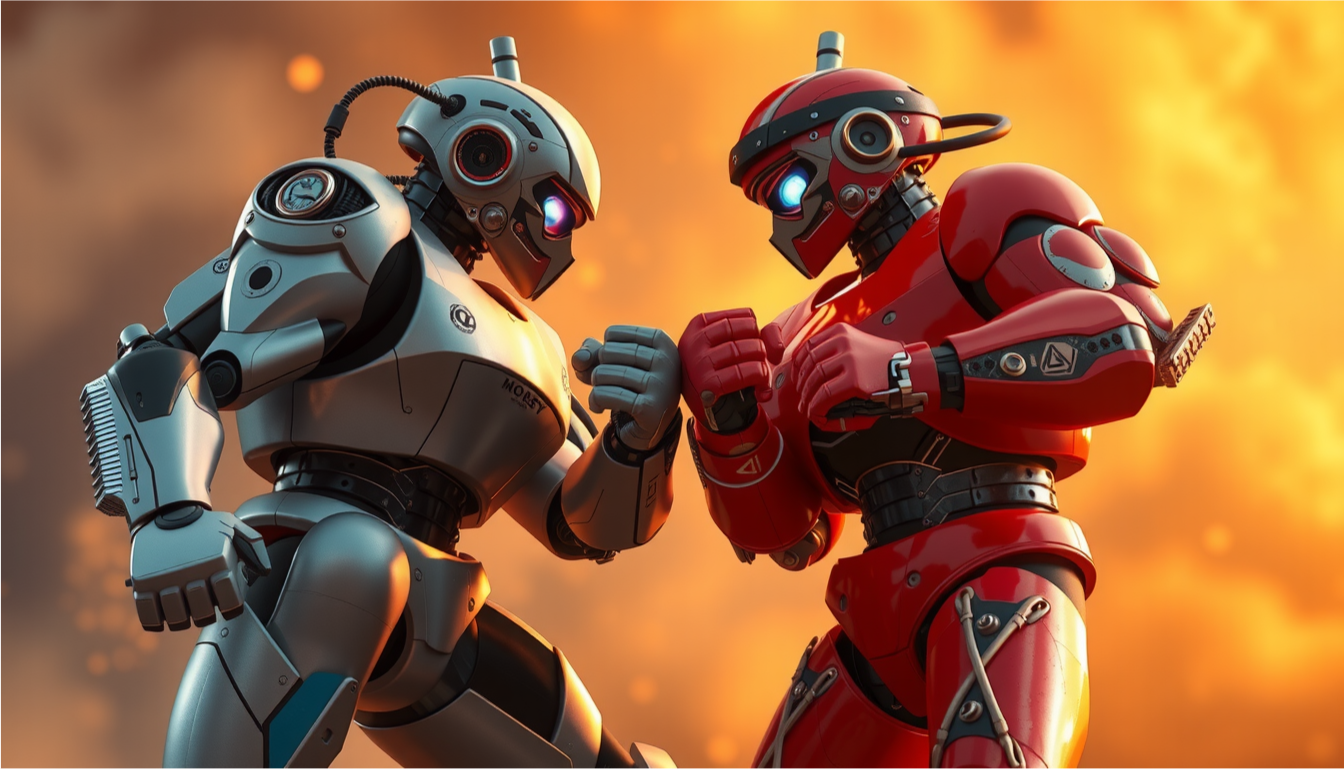
Check out our other Lists and news about AI and Technology
In recent years, AI image generators have gained massive popularity, offering an incredible range of possibilities across different industries. From helping social media influencers create visually engaging posts to enabling businesses to craft professional-grade marketing visuals, these tools are rapidly changing the game.
But among the sea of AI options, one question stands out: which AI tool creates the most hyper-realistic images? Today, we’re putting four leading AI image generators to the test: Stockimg.ai, Flux, Midjourney, and Ideogram.
Our focus? Seeing how well each AI handles the creation of hyper-realistic images, such as detailed car accident scenes and intricate product shots. By evaluating how each platform deals with texture, lighting, and fine details, we’ll determine which tool delivers the most believable results.
Will any of these tools fool an audience into thinking the images are real? Let’s find out!
Evaluating Hyper-Realism: How Each Tool Handles Realistic Imagery
Car Crash Scene: Black Porsche on the Road After an Accident
First up, we tested how each AI handles a visually complex scene: a black Porsche post-accident, sitting dramatically on the road. Let's take a look at the results.
Stockimg.ai's Output:
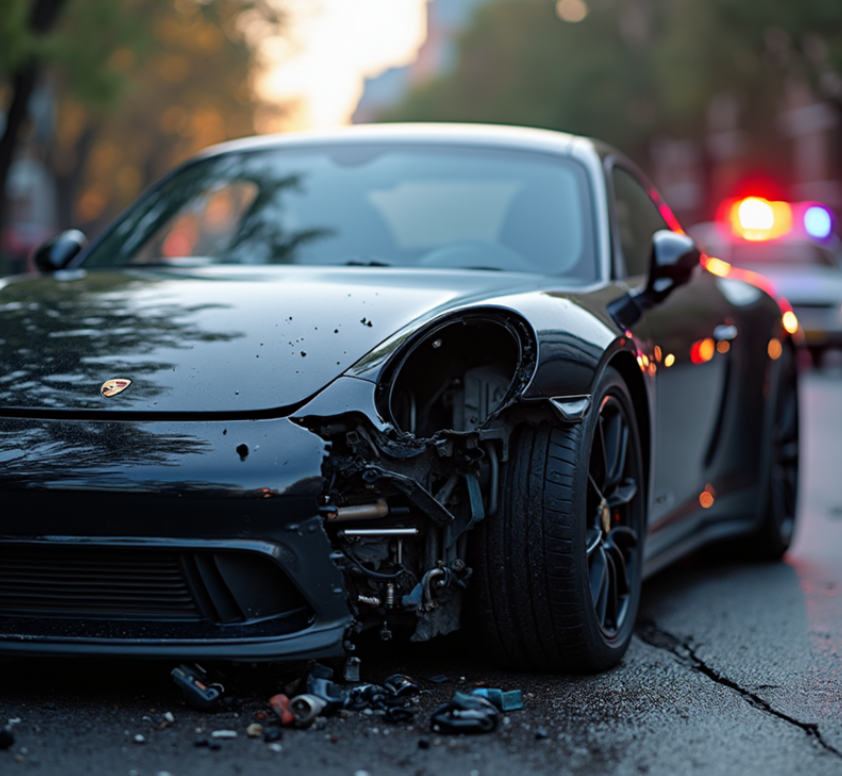
Stockimg.ai’s version of the car crash is impressively detailed. The AI nails the sharpness of the vehicle’s damage, from the crumpled hood to the tiny glass shards on the pavement. The lighting and reflection on the car body make it look like a scene straight out of a commercial or an insurance claim ad.
Flux's Output:
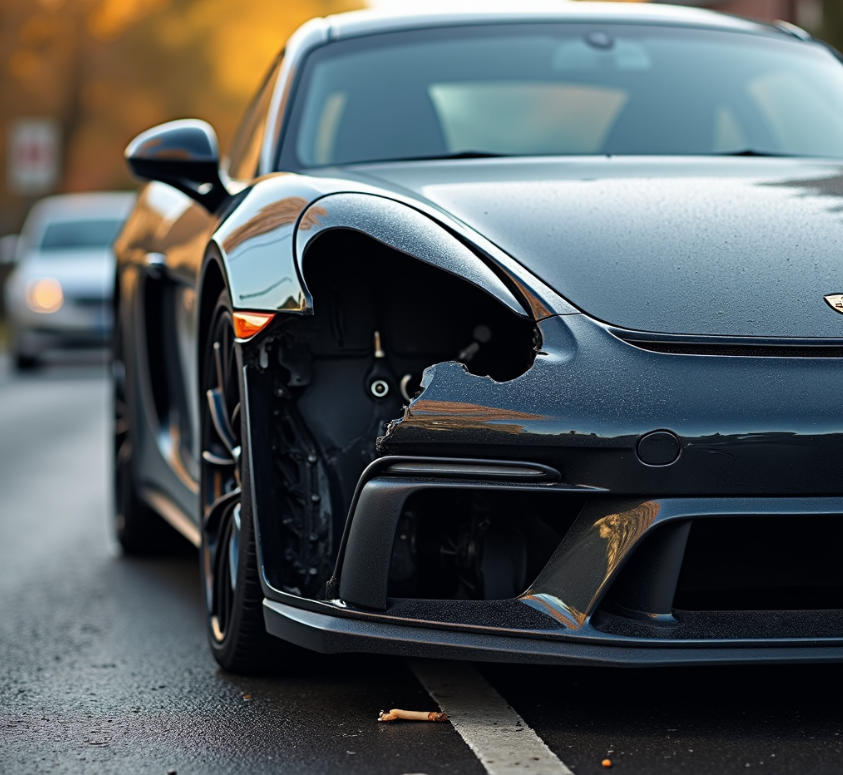
Flux’s image, while strong, lacks the intricate detail that Stockimg.ai offers. The damage to the car is visible but not as sharp, and the surrounding elements (like the road and background) appear a bit too soft for a truly hyper-realistic scene.
Midjourney's Output:

Midjourney takes a more artistic approach to the accident. While it’s not necessarily bad, the scene looks more like it’s been pulled from a movie or video game rather than a real-life accident. It’s dramatic, but perhaps too stylized for those needing something more true-to-life.
Ideogram's Output:

Ideogram, similar to Flux, delivers an image that’s good but not great. The car is there, the accident details are visible, but it doesn’t scream realism. You could use this for general purposes, but if you’re after professional quality, you might find it lacking in depth.
Results in Comparison
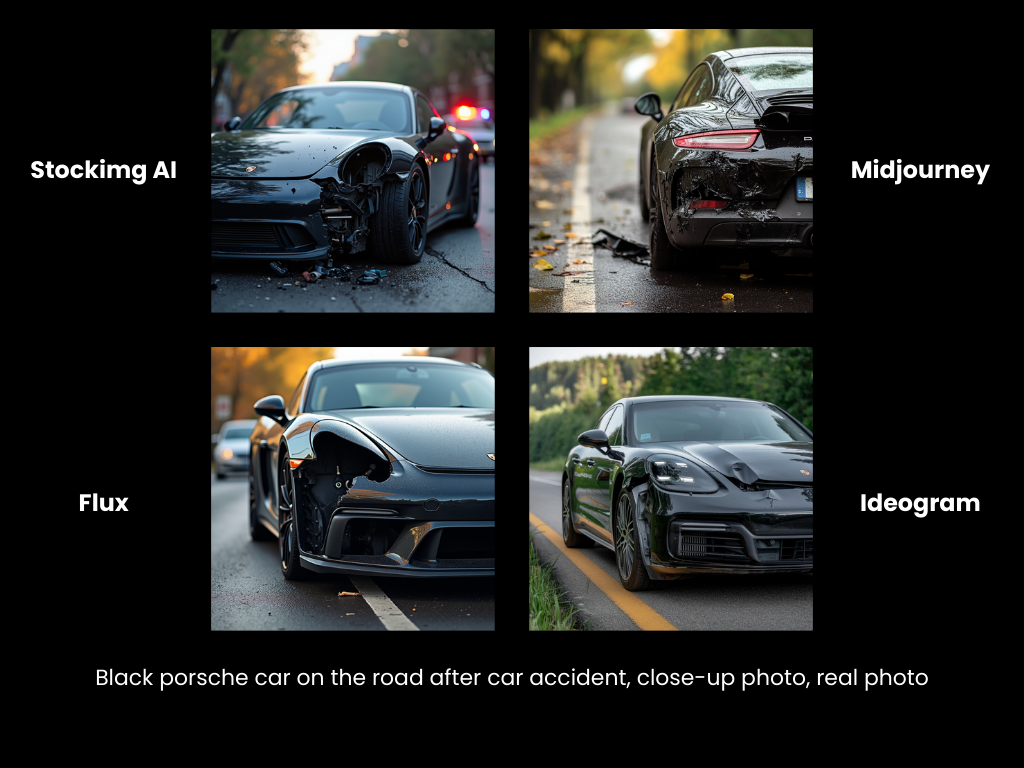
A Realistic Man
Next, we tested how each AI generator handles the challenge of creating a realistic human portrait. This test highlights each tool's capability to capture detailed facial expressions, textures, and human features that could easily pass as a real photo. Let's break down the results.
Stockimg.ai's Output:

Stockimg.ai produced an incredibly lifelike image of a man, focusing on sharp facial details like skin texture, eye reflections, and subtle hair variations. The expression is neutral yet expressive, and the lighting adds an extra layer of realism. This output could easily pass for a real person in high-quality social media posts or commercial marketing.
Flux's Output:

Flux’s attempt is good, but it slightly lacks the level of fine detail that Stockimg.ai offers. The face is well-constructed, but textures like skin pores and facial hair don’t pop as much. It’s a solid option for general use but falls short in hyper-realism compared to Stockimg.ai.
Midjourney's Output:
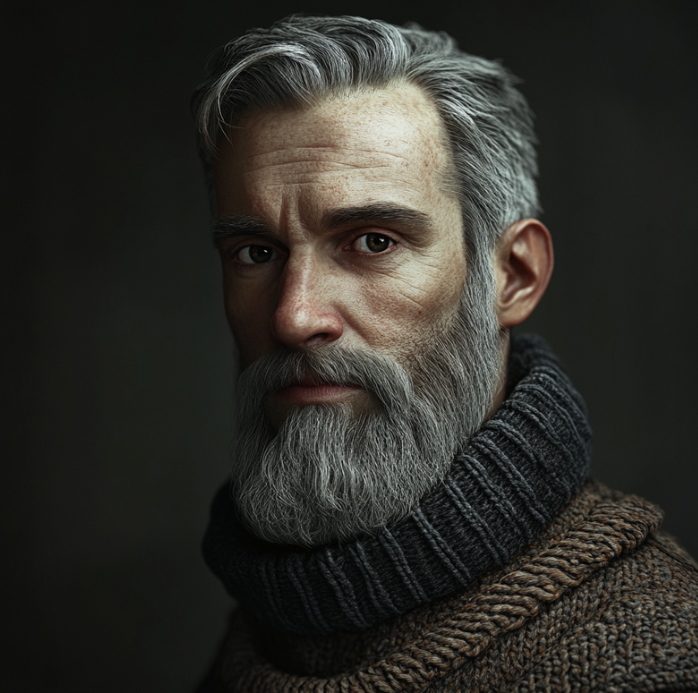
Midjourney leans more toward an artistic interpretation. The man appears almost like a character from a high-quality video game rather than a real person. While it’s visually stunning and well-suited for artistic projects, it may not fit if hyper-realism is your priority.
Ideogram's Output:

Ideogram’s man portrait feels a bit artificial. It’s a step above a digital mock-up but doesn’t match the realism needed for professional use. The facial features and textures are somewhat muted, making it more suitable for general visual purposes rather than hyper-realistic photography.
Results in Comparison
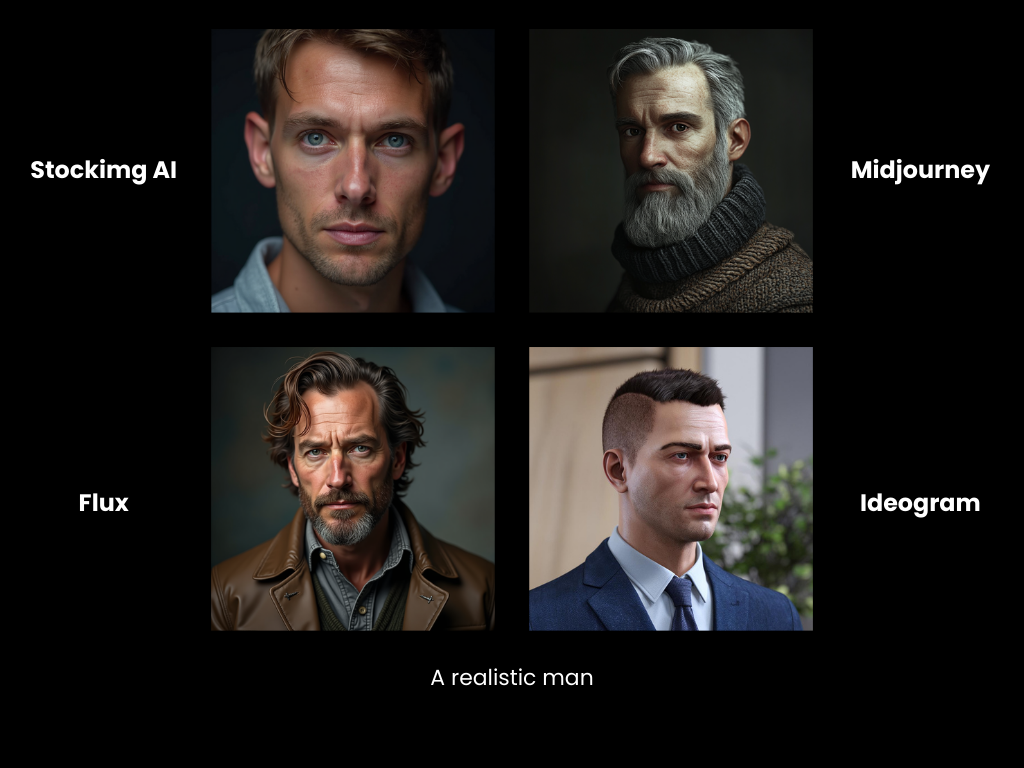
Conclusion for This Section
In both the car accident scene and the product shot, Stockimg.ai stands out for its exceptional realism and attention to detail. Whether it’s capturing the precise damage on a car or making a shampoo bottle look like it belongs on the shelves of a premium store, Stockimg.ai proves that it’s a step ahead when it comes to hyper-realism.
Flux and Midjourney offer great alternatives, with Midjourney leaning more into artistic creativity. Ideogram, while useful for general purposes, doesn’t quite match the level of detail required for hyper-realistic images.
🔍 Want to run your own realism test?
Think you can challenge our results?
With the Stockimg Flux API, you can build your own comparison tool and test hyper-realism across any model or prompt you like.
Whether it’s a chaotic street scene or a professional portrait, the power is in your hands.
Industry-Specific Applications: Which AI Generator Is Best for Your Needs?
Which AI image generator is best suited for your specific needs? Let’s break it down using our examples: a dramatic car crash scene and a realistic human portrait.
-
Stockimg.ai: Ideal for industries needing high-detail visuals in both automotive and human imagery.
- Example: Stockimg.ai’s depiction of the black Porsche after a car accident showcases its strength in creating realistic and intricate automotive visuals, making it perfect for marketing campaigns or insurance simulations. Additionally, Stockimg.ai’s portrait of a realistic man highlights its capability to produce lifelike human images, suitable for professional profiles, advertisements, or high-quality social media content.
-
Midjourney: Best for artistic and creative projects where a touch of stylization is welcome.
- Example: Midjourney’s approach to the car crash scene offers a dramatic, stylized representation that might be more suited to cinematic or artistic contexts rather than real-world applications. Similarly, its portrayal of a realistic man has an artistic flair, making it ideal for creative visual projects or eye-catching social media posts.
-
Flux: Suitable for projects that need a balance between realism and artistic interpretation.
- Example: Flux’s car crash scene provides a solid, realistic depiction but lacks the fine details seen in Stockimg.ai’s version. Its portrait of a man is effective for general purposes but doesn’t capture the same level of realism, making it suitable for less demanding applications where high detail is not as critical.
-
Ideogram: Effective for niche uses that benefit from stylized realism, though less versatile for hyper-realistic needs.
- Example: Ideogram’s car crash scene and portrait of a man show a useful level of detail but may not meet the standards required for professional-grade realism. It’s best for mock-ups or general visual needs where the utmost realism is not a priority.
Each platform excels in different areas. Stockimg.ai stands out for its hyper-realistic automotive and human imagery, while Midjourney and Flux offer valuable creative options. Ideogram is useful for less demanding projects but may fall short for high-detail requirements.
Conclusion: Which AI Image Generator Offers the Most Realism?
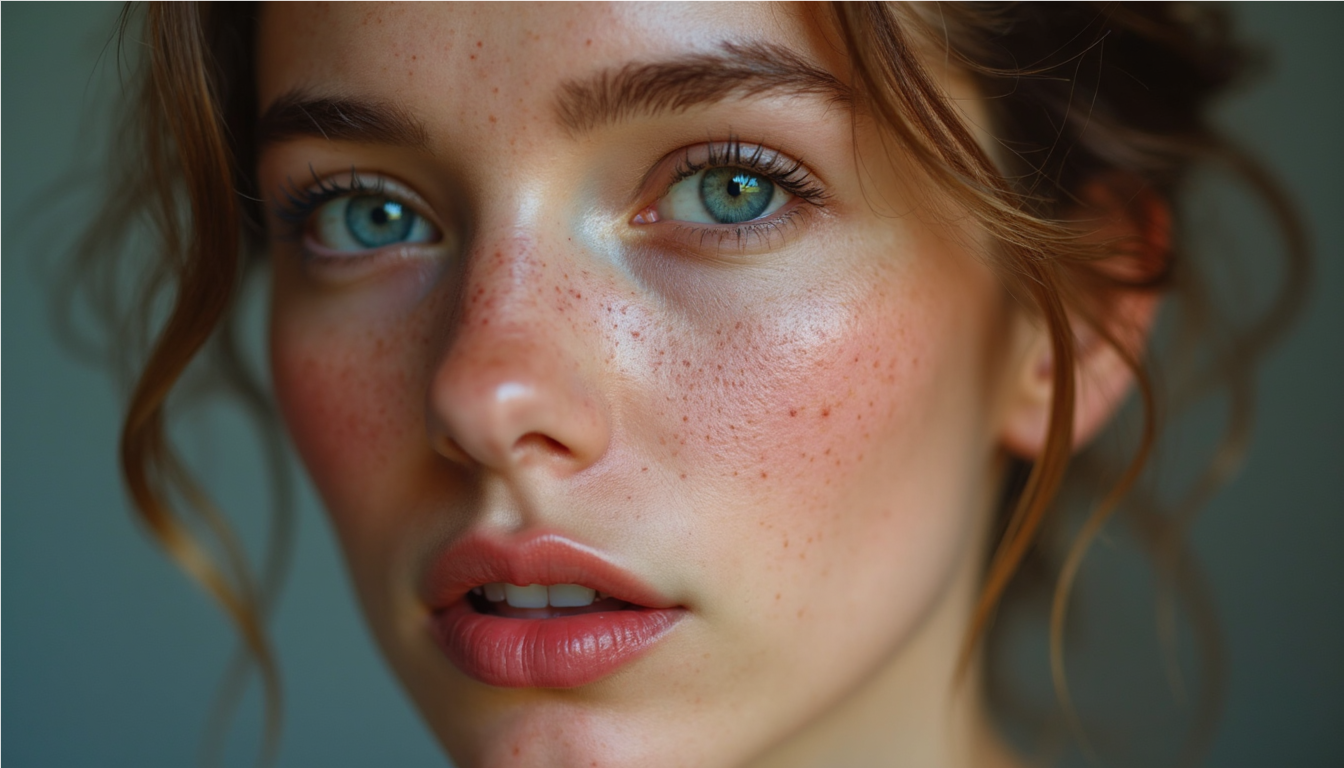
When it comes to realism, Stockimg.ai consistently delivers hyper-realistic, polished images that could easily pass for professional photography. From the fine details of a car crash scene to the intricate textures of a product shot, Stockimg.ai is clearly the best choice for professionals needing polished, real-world visuals.
Midjourney and Flux are solid alternatives for more creative, artistic projects, while Ideogram is best for quick mock-ups or lower-stakes visuals. If you need true realism, Stockimg.ai is your top pick.
Ready to create stunning, hyper-realistic images? Stockimg.ai is your ultimate tool for realism, whether you’re working on automotive visuals, product photography, or anything in between.
🎯 Realism at your fingertips
If you're serious about lifelike visuals, don’t settle for average.
The Flux API on Stockimg.ai lets you automate hyper-realistic image generation at scale — for ads, e-commerce, product demos, and more.
Compare models, run tests, and build your own creative workflows, all through code.
🔥 Start building: API Docs →

